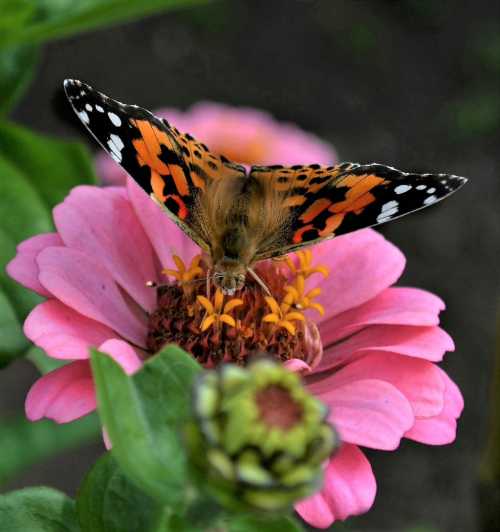Worldwide Insect Decline
A
paper has been published, which highlights the worrying worldwide decline of
insects.
The
paper, Worldwide decline of the entomofauna: A review of its drivers (1) by Francisco
Sánchez-Bayo and Kris A.G. Wyckhuys, presents a thorough review of 73
historical reports of insect declines from across the globe, and systematically
assesses the underlying drivers.
Worldwide Insect Decline - Key
Points From The Paper
- Over 40% of insect species are threatened with extinction.
- Lepidoptera (moths and butterflies), Hymenoptera (bees, wasps, ants and sawflies) and dung beetles (Coleoptera) are the taxa most affected.
- Four
aquatic taxa are dangerously threatened, and have already lost a large
proportion of species.
- Affected
insect groups include both specialists that occupy particular ecological niches, as well as many common and generalist species.
 Above: Painted Lady butterfly Vanessa cardui on Zinnia.
Above: Painted Lady butterfly Vanessa cardui on Zinnia.
Are
Any Insect Species Increasing?
The abundance of a small number of species is increasing. These are adaptable, generalist species that are occupying the vacant niches left by the ones declining.
Drivers
Of Insect Decline
The
main drivers of species declines listed in order of importance:
- habitat loss and conversion to intensive agriculture and urbanisation;
- pollution, mainly from synthetic pesticides and fertilisers;
- biological factors, including pathogens and introduced species; and
- climate
change. This factor is stated to be important in tropical regions, but only
affects a minority of species in colder climes and mountain settings of temperate
zones.
These drivers are of course, well known and established, but action needs to be taken to make a meaningful difference as quickly as possible.
Solution
The paper proposes:
“A rethinking of current agricultural practices, in particular a serious reduction in pesticide usage and its substitution with more sustainable, ecologically-based practices, is urgently needed to slow or reverse current trends, allow the recovery of declining insect populations and safeguard the vital ecosystem services they provide.
In addition, effective remediation technologies should be applied to clean polluted waters in both agricultural and urban environments.”
Comment
– The Impact On Birds
In tandem with global insect decline, birds have also been declining, especially those of farmland habitats.
The increased use and efficacy of pesticides leads to the loss of insect food and wildflower and weed seeds.
Many small farmland
birds feed their young chicks on insects in the spring and summer months, whilst the
developed adults eat mainly seeds.
In 2013, Bird Life International wrote:
“An analysis of 148 of Europe’s common birds has revealed that, over a 30-year period, 57 species (39%) have declined across 25 European countries. Farmland birds have fared particularly badly, with 300 million fewer birds today than in 1980.
These population trends of representative suites of wild birds can indicate the health of the environment, for birds and wider biodiversity.”
“A comparison of new and old EU Member States shows that although farmland birds were performing better in new EU countries, their trends appear to be worsening in recent years, now mimicking the trends in old EU countries.
It is widely accepted that these declines have been driven by agricultural intensification and the resulting deterioration of farmland habitats, and it is likely that the trends observed are mirrored by other farmland taxa.” (2)
They
also state:
- An assessment in 1994 estimated that 25% of all European bird species were undergoing substantial population declines (Tucker and Heath 1994).
- Overall, out of 148 bird species, 57 (39%) have declined over 30 years, from 1980 to 2010.
References
(1) Worldwide decline of the entomofauna: A review of its drivers.
(2) Europe-wide monitoring schemes highlight declines in widespread farmland birds.
Conservationists call for better testing of insecticides, which inevitably means testing insecticides on bees.
During this process, some bees may die.
Is it okay to kill bees in order to test insecticides?
If you found this page helpful or interesting, I'd really be grateful if you would share it with others - if not this page, perhaps another, such as Gardening For Bees.
Thank you so much :) .
